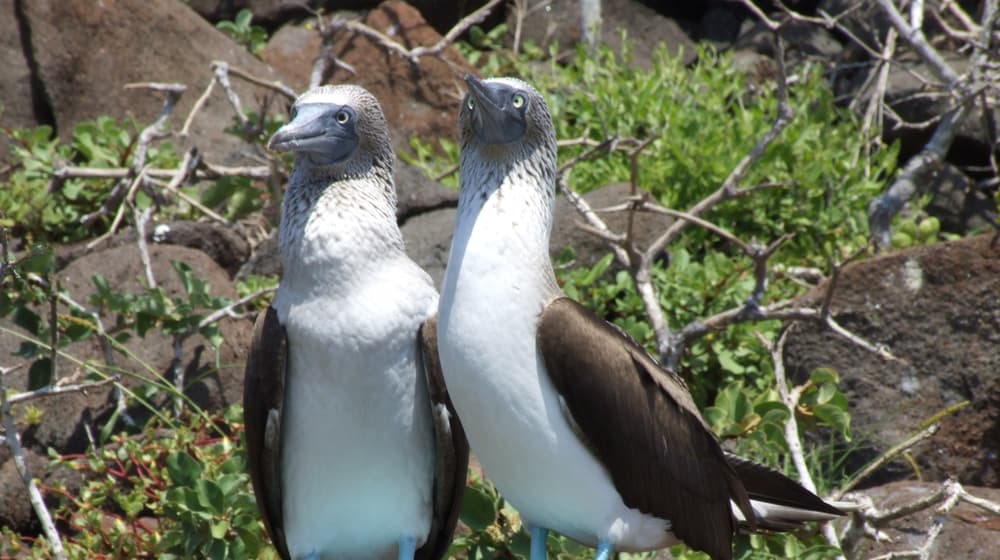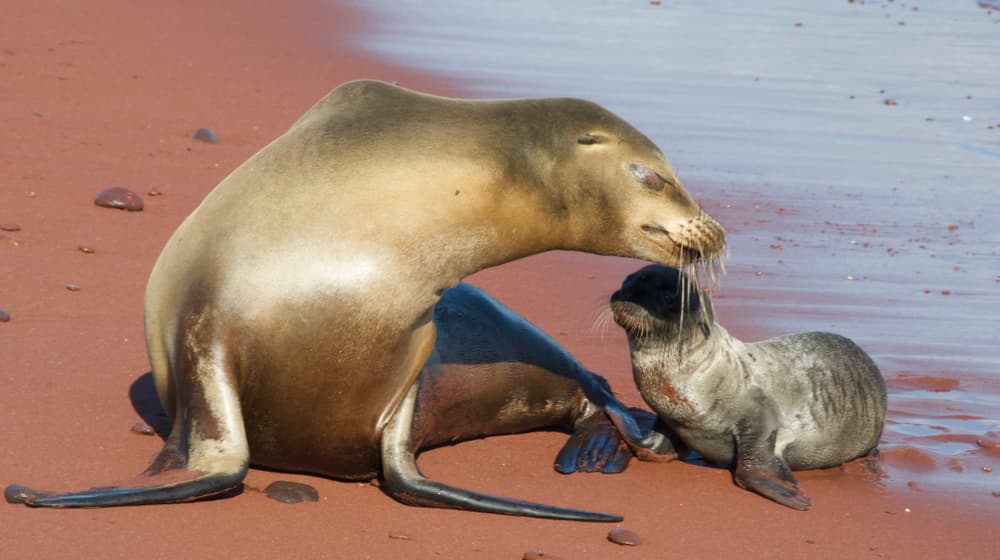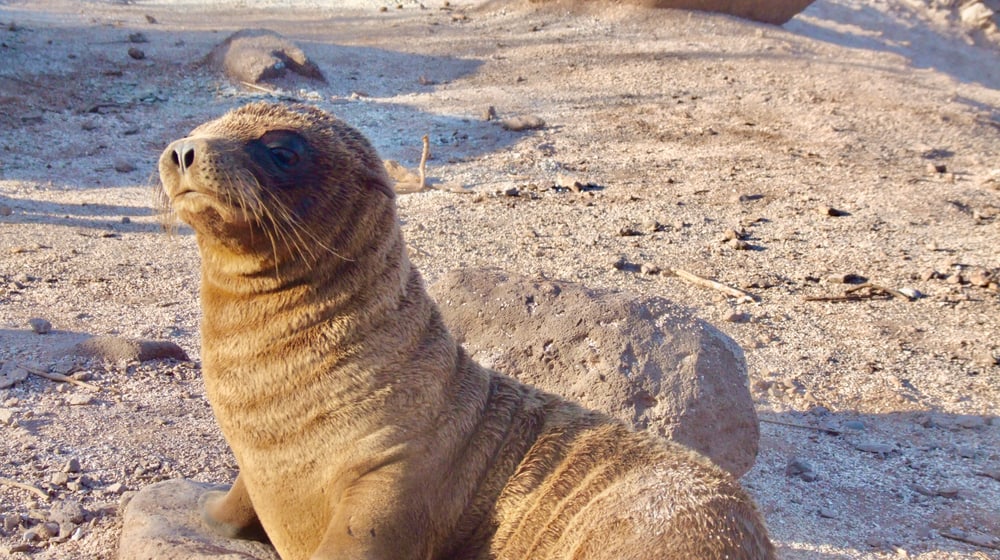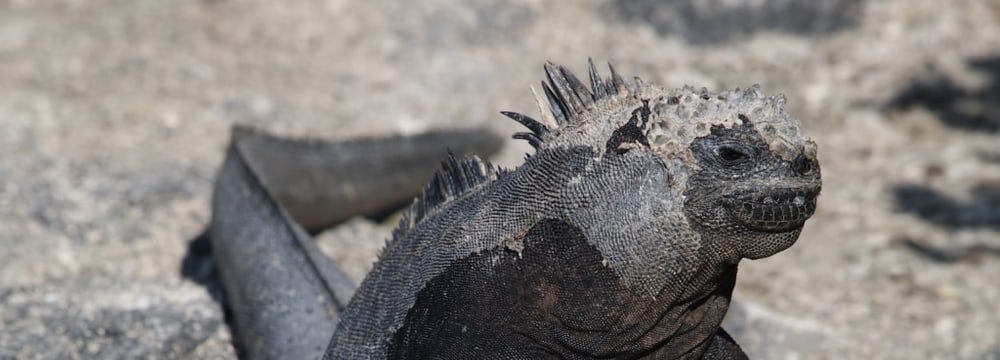
MARINE IGUANA CENSUS
The Marine Iguana (Amblyrhynchus cristatus) is a charismatic and endemic species of the Galápagos Islands and is threatened with extinction. There are 11 subspecies, each of which is unique and important to the survival of the species as a whole. Because the Marine Iguanas are endemic, they are not found anywhere else on Earth (not even in zoos!). If the animals become extinct in the Galápagos, they will be lost forever.
Marine iguanas are the only lizards in the world that enter the sea. They inspired the creation of Godzilla (there's even a subspecies named after Godzilla!), and award-winning footage was recently released by the BBC's Planet Earth 2 channel revealing their incredible struggles for survival. In fact, the least of their problems is being hunted by native wildlife, like the racing snake in the film. Predominantly, we humans are responsible for protecting them through our activities.
The conservation authorities want to help, only the colonies of the Marine iguanas are very difficult to access and so reliable figures have still never been collected as to how many marine iguanas are left and where exactly they can be found. Without this information, it is very difficult (if not impossible!) to effectively obtain. Important populations or even entire subspecies could become extinct without us noticing.
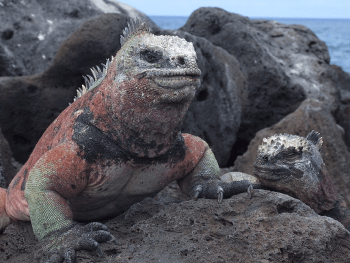
Dr. Amy Macleod's team is pioneering a solution that is both highly innovative and scientifically accurate. It could revolutionize the determination of the size of animal populations not only in the Galápagos Islands, but far beyond.
The method involves using unmanned aerial vehicles (UAVs, also known as drones) to fly safely over coastlines. The UAVs are used to take photos and videos of the ground; these images can then be used to count sea lizards (and other wildlife) using computers and apps. In this way, marine iguanas censuses can be done faster, cheaper, and safer than ever before. Because the UAVs can launch from boats, it is possible to do this work with minimal disturbance to the islands' sensitive wildlife.
The second innovative aspect of the project is to conduct a census of iguanas as part of a citizen science project on zooniverse.org. In parallel, ground-based counts will be conducted at a small number of colonies in the Galápagos Islands. This will verify that the new methods provide data that are as good - if not better - than those provided by conventional methods.
- Estimating the size and location of all important marine iguana populations across the Galápagos archipelago.
- Create a clear conservation management plan to ensure effective protection for all 11 subspecies
- Testing and developing UAV-based protocols for further surveys in the Galápagos and other regions
- Pioneering new methods for counting animals using machine learning and lay scientists from the local population
- Creating and archiving a large number of high quality digital images documenting the current state of the Galapagos coastlines. Such images may prove invaluable for future efforts to assess the extent of environmental change in the archipelago.
Invasive species
When people arrived in the Galápagos, they brought other species with them, including cats, rats, and dogs. These animals now live feral on several islands. As these predators are new to the Galápagos, the native wildlife lacks natural defense mechanisms. Marine iguanas - especially the smallest and youngest - are known to be preyed upon by these invasive species, and some populations are thought to be severely affected. In such populations, we see very few young sea lizards. Without enough juveniles, the future of the population is very uncertain. Therefore, there is concern that this could lead to the extinction of entire subspecies, such as the Godzilla iguana of San Cristobal Island.
Pollution of the seas
Marine iguanas rely on symbiotic bacteria to help them digest the algae they eat. Without these bacteria, they can starve to death even with stomachs full of suitable food. In 2001, an oil tanker ran aground off San Cristóbal Island. The spilled oil spread to neighboring islands and washed into the sea lizard colonies. Researchers studying sea lizards on Santa Fé found that over 60% of the iguanas in one colony died as a result of this oil. Probably because their internal bacteria died and they starved to death as a result. We don't know if other populations were also affected because none of them were particularly well studied at the time. The threat of marine pollution also persists, for example from plastic waste in the oceans.
Climate change
The Galápagos Islands are affected by climatic events, including the regular El Niño events. These events increase the temperature of the ocean around the islands and lead to a change in algae populations, replacing the usual food sources with new algae that the sea lizards cannot digest. This can cause entire populations to collapse as up to 90% of the animals starve to death. El Niños are natural events, and sea lizards have developed amazing adaptations to survive them. However, with climate change, there is concern that El Niños could worsen, pushing sea lizard populations past the point where they will recover. This also puts them at risk of extinction.
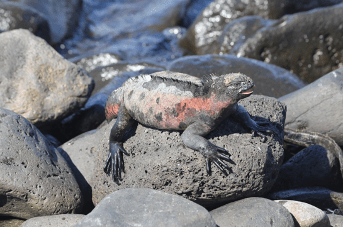
To prevent extinction, efforts to combat these threats must focus on the most vulnerable populations.
Help us to do this by counting the sea lizards in the photos and contributing to the identification of these highly threatened populations. Click here to go to the project platform
Below you will find a detailed explanation in German on how to proceed with the counting.
